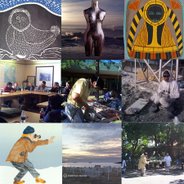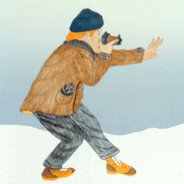Inuit Qaujimajatuqangit […] is more than a government policy; it is our collective means of interpreting our world. As a theory of knowledge, (IQ) is a set of practical truisms about the interrelationships between nature and society that have been passed orally from one generation to the next. It is a holistic, dynamic and cumulative approach to knowledge, teaching and learning. (IQ) recognizes that one learns best by observing, doing and experience (Okalik 2003)."
An Inuit-centred lexicon of human rights is emerging[1] based on Inuit Qaujimajatuqangit concurrently with the emergence of institutions, their mandates and publications, such as, the Bathurst Mandate (GN 2000), the Clyde River Protocol (Okalik and Kusugak 1999) and the Interviewing the Elders Series (Laugrand, Oosten, and Rasing 1996). Consultations leading to the formation of Nunavut and to the development of a Human Rights Bill[2] (GN 2003), the Government of Nunavut Hansard[3] (Irqittuq 2003) for Nunavut (Amagoalik 2001) also provided invaluable material for understanding the changing teaching, learning and research environment in Canada’s North. Inuit legends such as the Kiviuk epic legend, the legend of the blind boy and orphan boy can be used to illustrate traditional ways in which stories revealed consequences of violating the rights of the disadvantaged and marginalized. A number of videos including those made for and by Inuit were also used in the course to enhance understanding of issues related to human rights in
At this conference Premier Okalik acknowledged the challenges of transforming a society afflicted with inherited social wrongs. Governance for the new territory is based on traditional Inuit values respected for the full weight of the history it reflects, as a proactive means engaging the transition. Inuit culture remained intact until relatively recently unlike other indigenous peoples in
Inuit Qaujimajatuqangit: (IQ) encompasses all aspects of traditional Inuit culture including values, world-view, language, social organization, knowledge, life skills, perceptions, and expectations.'
Aajiiqatigiingniq: the concept of consensus decision-making. (Arnakak 2000).
Ajurnaummat: commonplace Inuktitut expression meaning ‘It can't be helped (Amagoalik 2001).’
Ajurnarmat: change the things that can be changed; accept those that cannot (Coccola and P. 1955; Jenness 1928; Minor 1992; Stefanson 1921; Stefanson 1951).
Inuit Qaujimajatuqangit: (IQ) encompasses all aspects of traditional Inuit culture including values, world-view, language, social organization, knowledge, life skills, perceptions, and expectations (ITK).
Inuit Tapiriit Kanatami: ITK means "Inuit are united in
Inuk Inuit: pl. person
Inummariit: Brody describes the concept of Inummariit (the free Inuk) refers to a person who has overcome physical, emotional and spiritual barriers (Brody 1991:125-45 cited in Minor 1992:104).
Inuuqattigiitsiaqnik: ‘a way for human beings to get along with each other’ (Amagoalik 2001).
Inuuqatigiittiarniq: “the healthy inter-connection of mind, body, spirit and environment.” “The health of
Inuuqatiinniq: interpersonal relationships, community kinship, a collective community process (Under "Healthy Communities" Bathurst Mandate).
Issuma: ability to reason - This “includes a social and group consciousness, taking into account all skills, knowledge and social and environmental influences and relationships Minor 1992:56).”
Issumatuq: In settling disputes the issumatuq could arbitrate a course of action if consensus could not be reached by dissenting parties (Minor 1992).
Makimajjutiit: ‘A tool to be able to stand for oneself" or “a tool against being put down, or oppressed (Amagoalik 2001).”
Nunavummiut: An inclusive term for the people of
Pijitsirniq: or the concept of serving. This principle lays out the roles and relationships between the organization and the people it serves (Arnakak 2000).
Pijunautinngit: ‘a tool you can use to get something’ or ‘an ability to get something’ (Amagoalik 2001)
Piqutiqaqatigiinniq: group communalism (Minor 1992)
Qallunaaq, kabluna, qablunaa non-Inuit
Tukisititsiqqiniq: communication competence (Minor 1992)
Sanaqatigiinniq: collaborative relationships (Minor 1992)
Selected References
Alia, Valerie. 1994. Names, Numbers, and Northern Policy: Inuit, Project Surname and the Politics of Identity.
Amagoalik. 2001. "Introduction: Human Rights Consultation Workshop." in Human Rights Consultation Workshop. Iqaluit, NU: http://www.nunavutcourtofjustice.ca/library/Publications/HumanRight20010429.htm.




1 comment:
Post a Comment